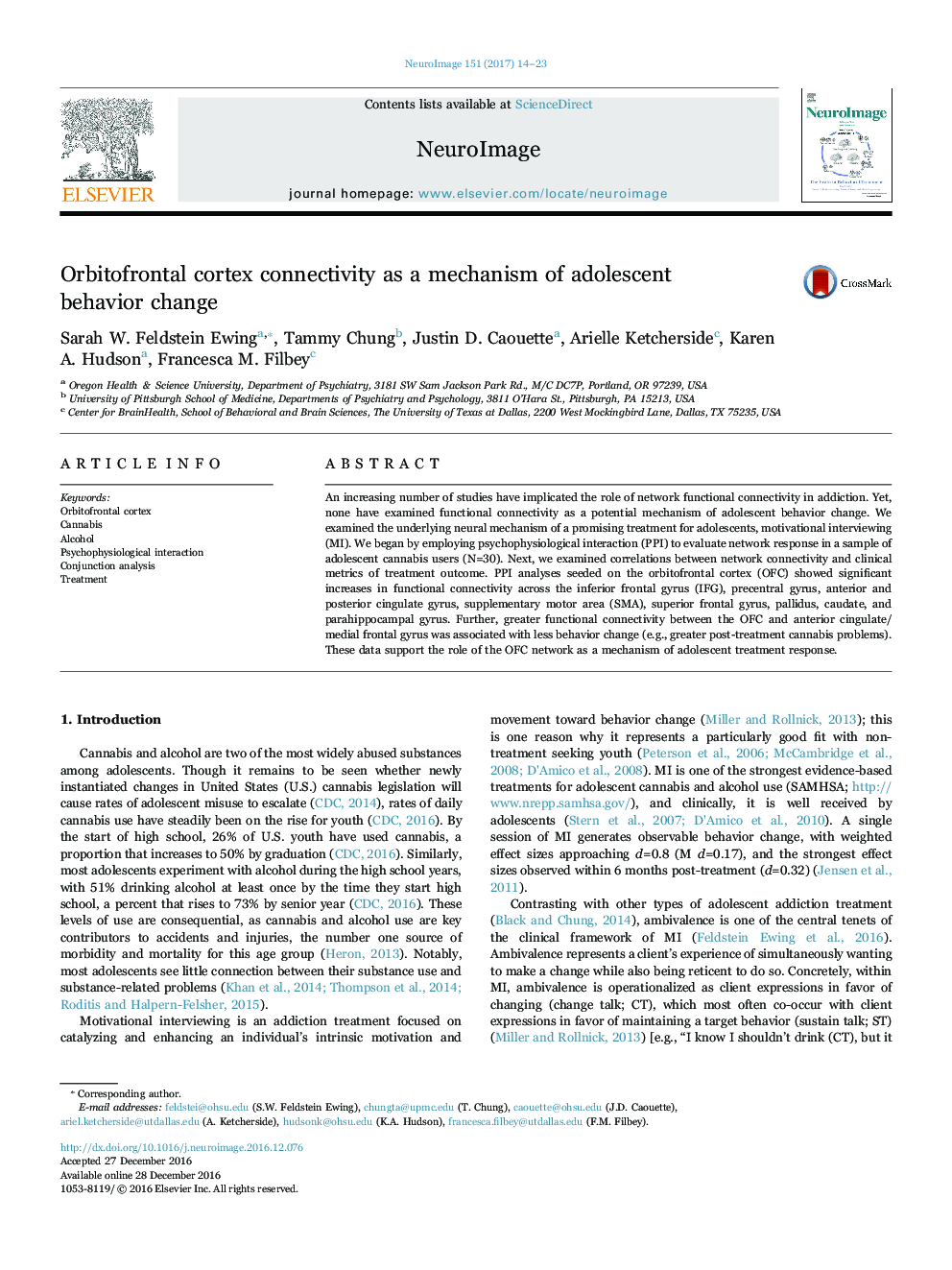| کد مقاله | کد نشریه | سال انتشار | مقاله انگلیسی | نسخه تمام متن |
|---|---|---|---|---|
| 5630878 | 1580859 | 2017 | 10 صفحه PDF | دانلود رایگان |
- Functional connectivity has been associated with addiction.
- We examined functional connectivity as a mechanism of treatment response.
- We found network cohesion seeded on the OFC.
- OFC functional connectivity was associated with behavior change.
An increasing number of studies have implicated the role of network functional connectivity in addiction. Yet, none have examined functional connectivity as a potential mechanism of adolescent behavior change. We examined the underlying neural mechanism of a promising treatment for adolescents, motivational interviewing (MI). We began by employing psychophysiological interaction (PPI) to evaluate network response in a sample of adolescent cannabis users (N=30). Next, we examined correlations between network connectivity and clinical metrics of treatment outcome. PPI analyses seeded on the orbitofrontal cortex (OFC) showed significant increases in functional connectivity across the inferior frontal gyrus (IFG), precentral gyrus, anterior and posterior cingulate gyrus, supplementary motor area (SMA), superior frontal gyrus, pallidus, caudate, and parahippocampal gyrus. Further, greater functional connectivity between the OFC and anterior cingulate/medial frontal gyrus was associated with less behavior change (e.g., greater post-treatment cannabis problems). These data support the role of the OFC network as a mechanism of adolescent treatment response.
Journal: NeuroImage - Volume 151, 1 May 2017, Pages 14-23
